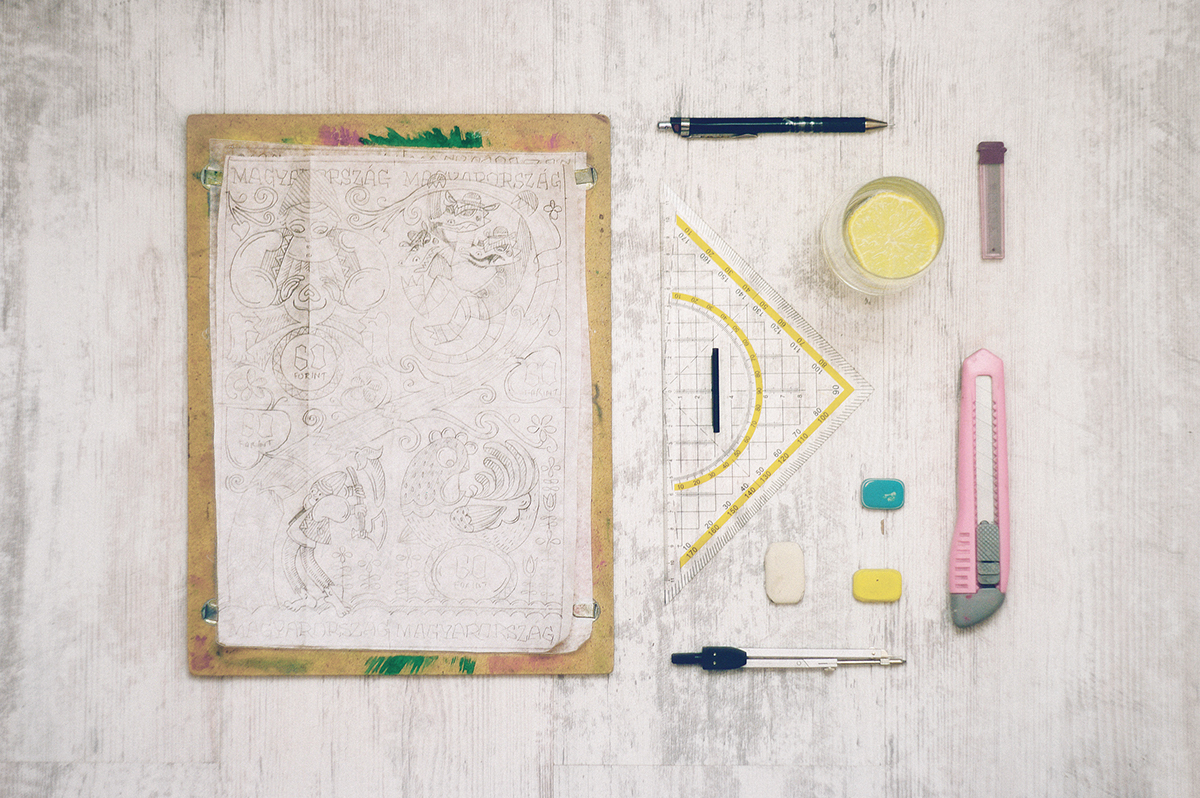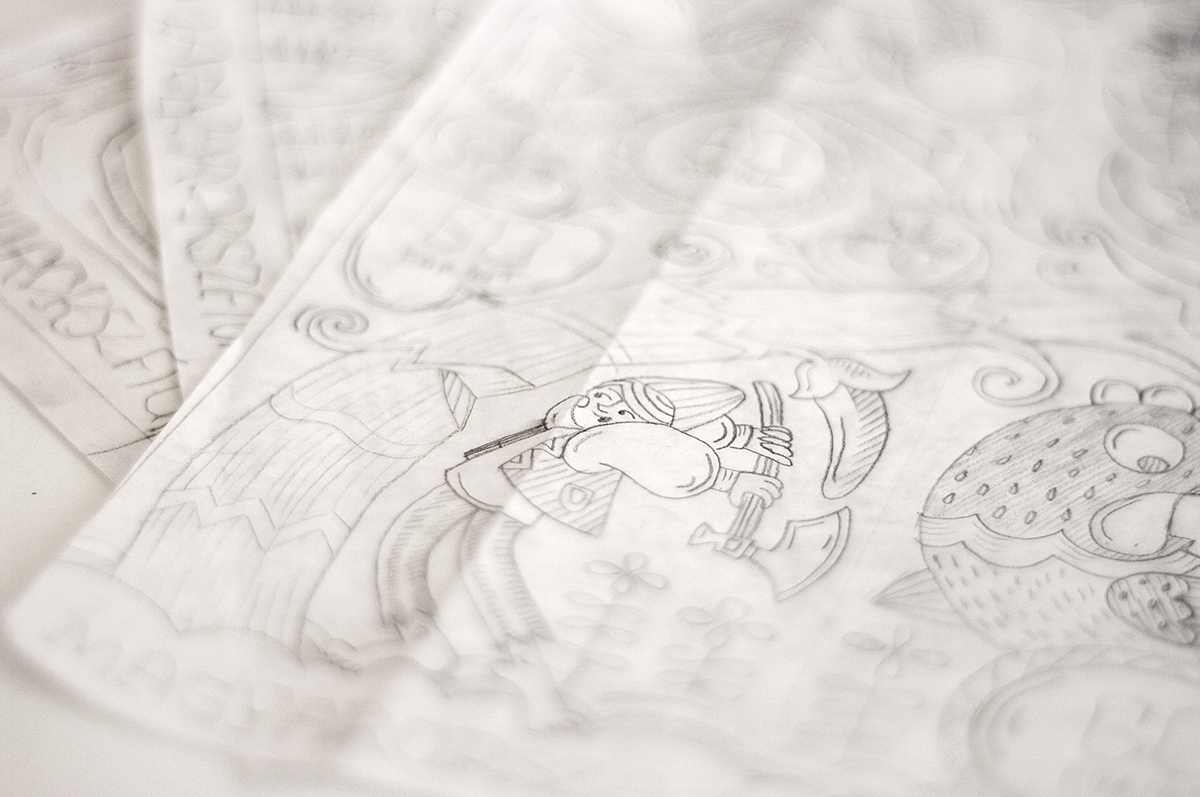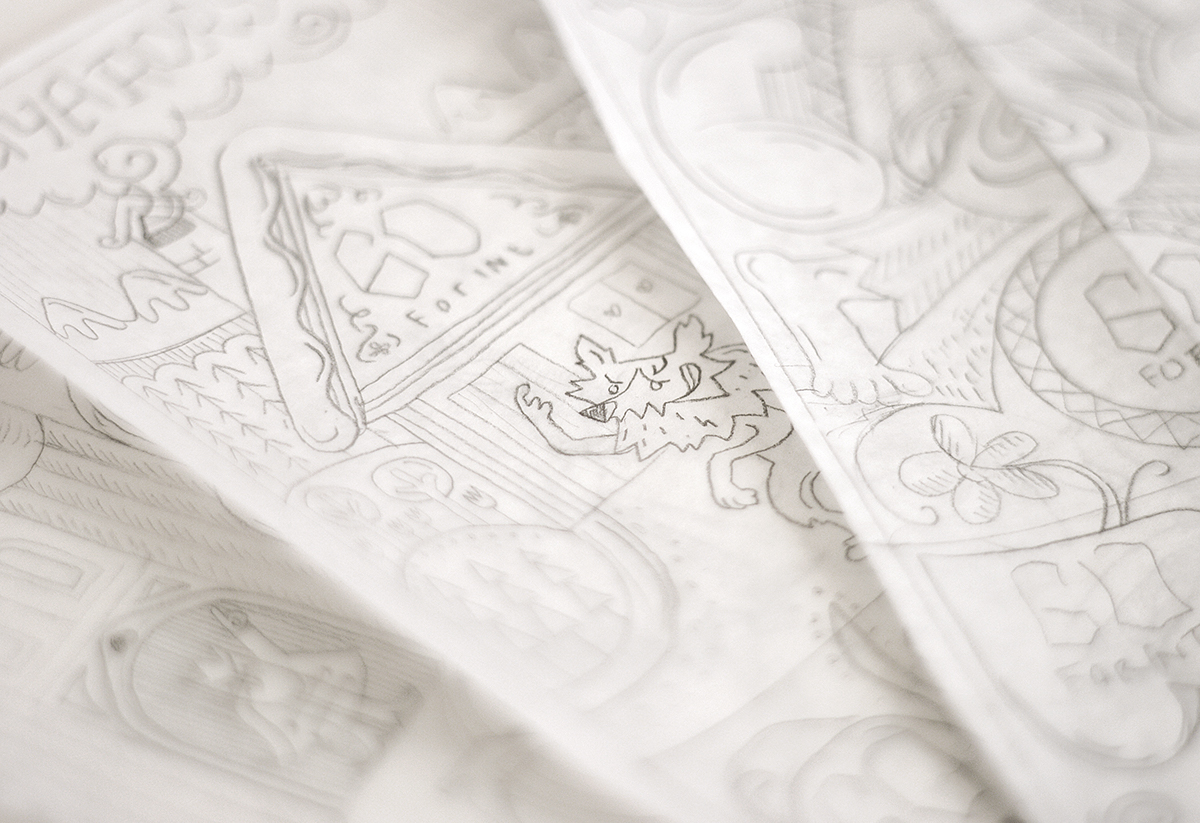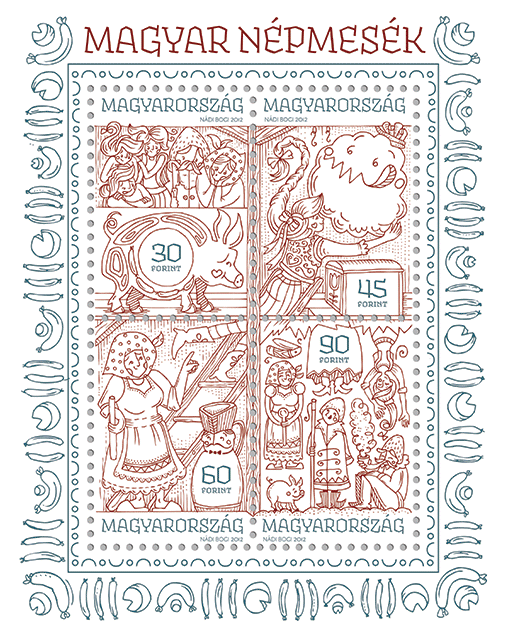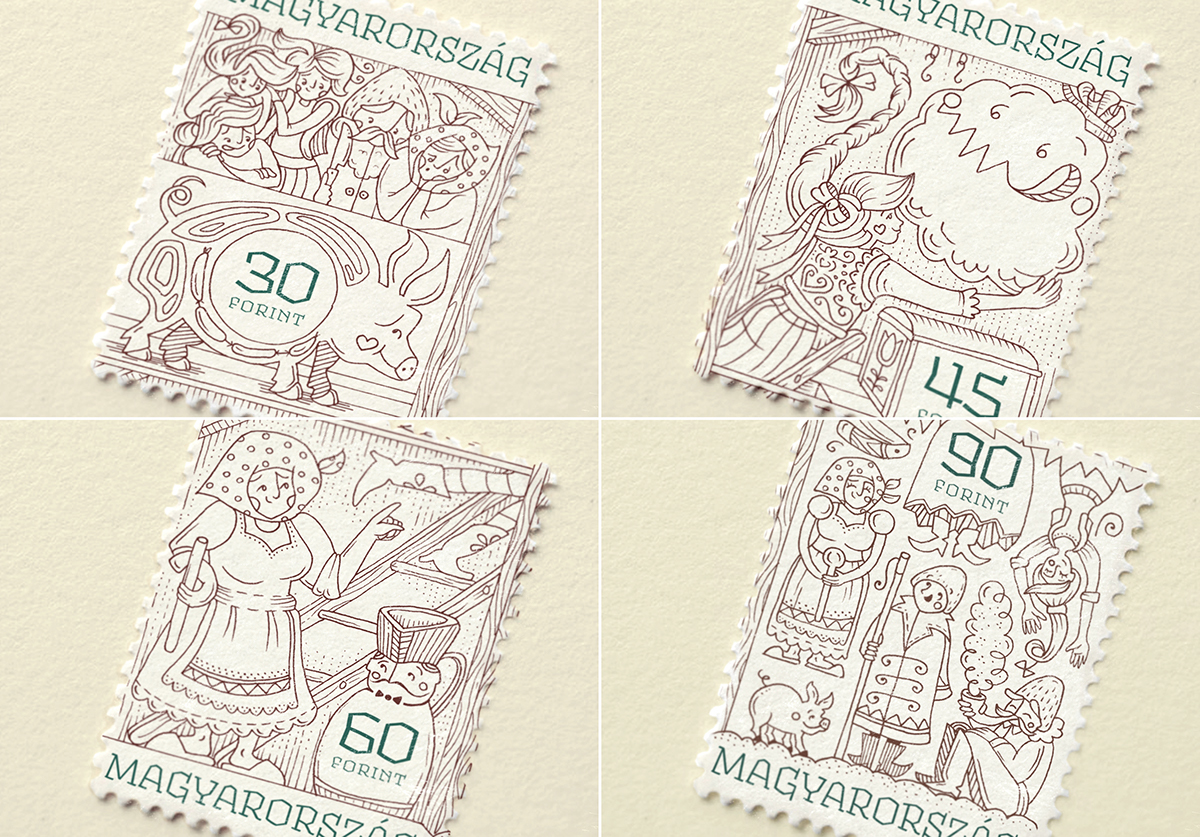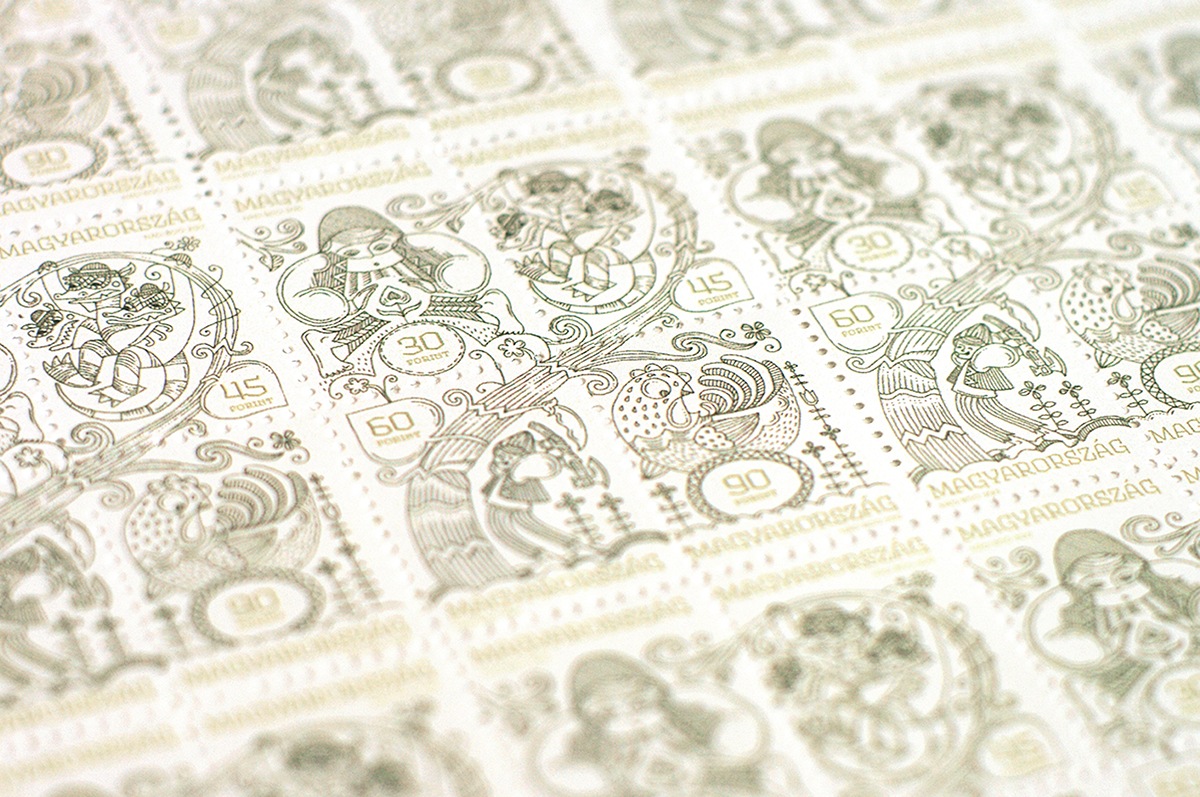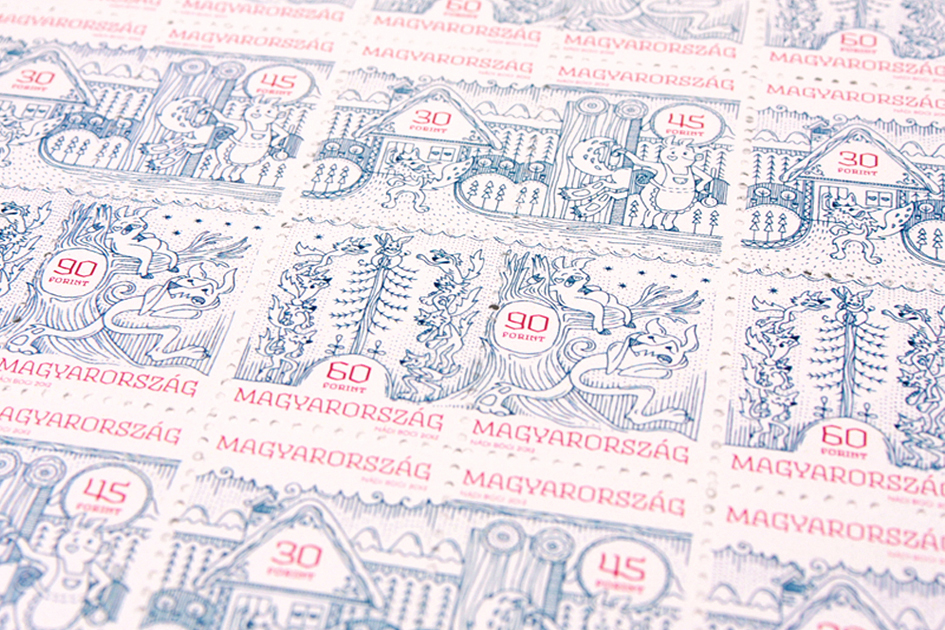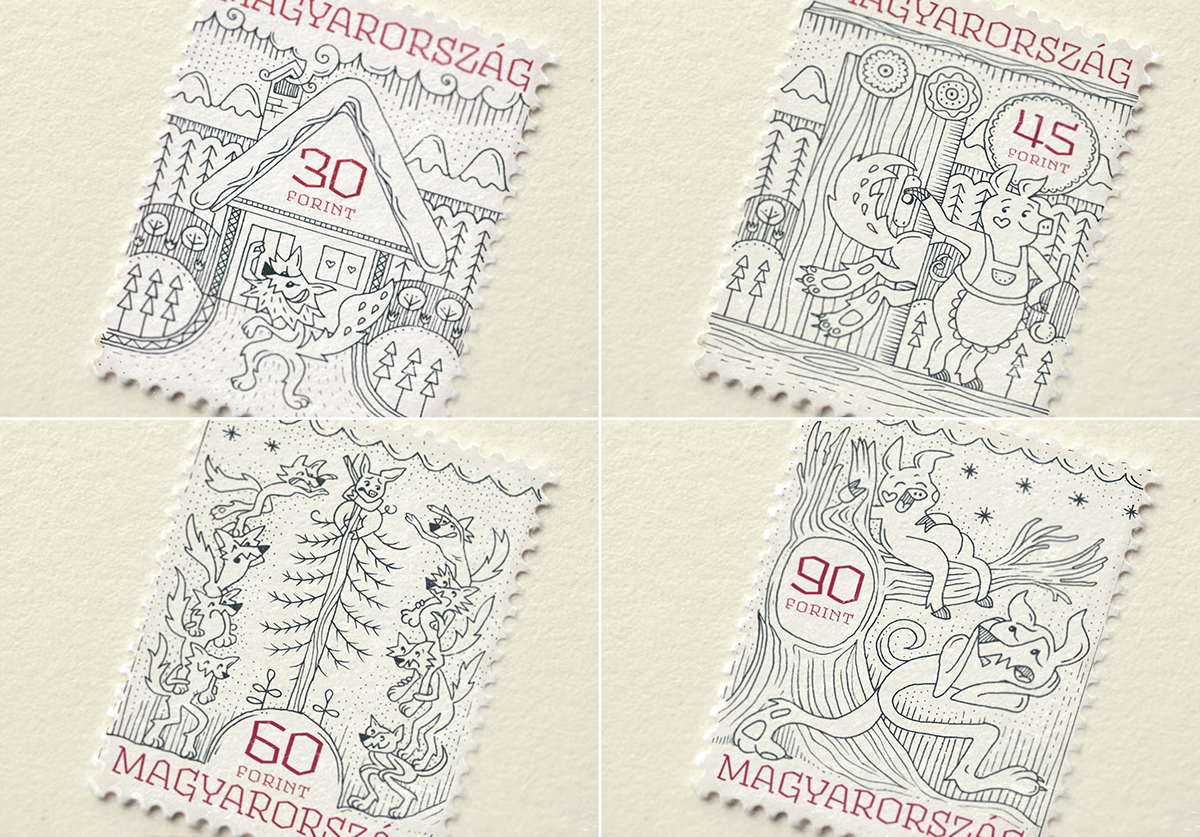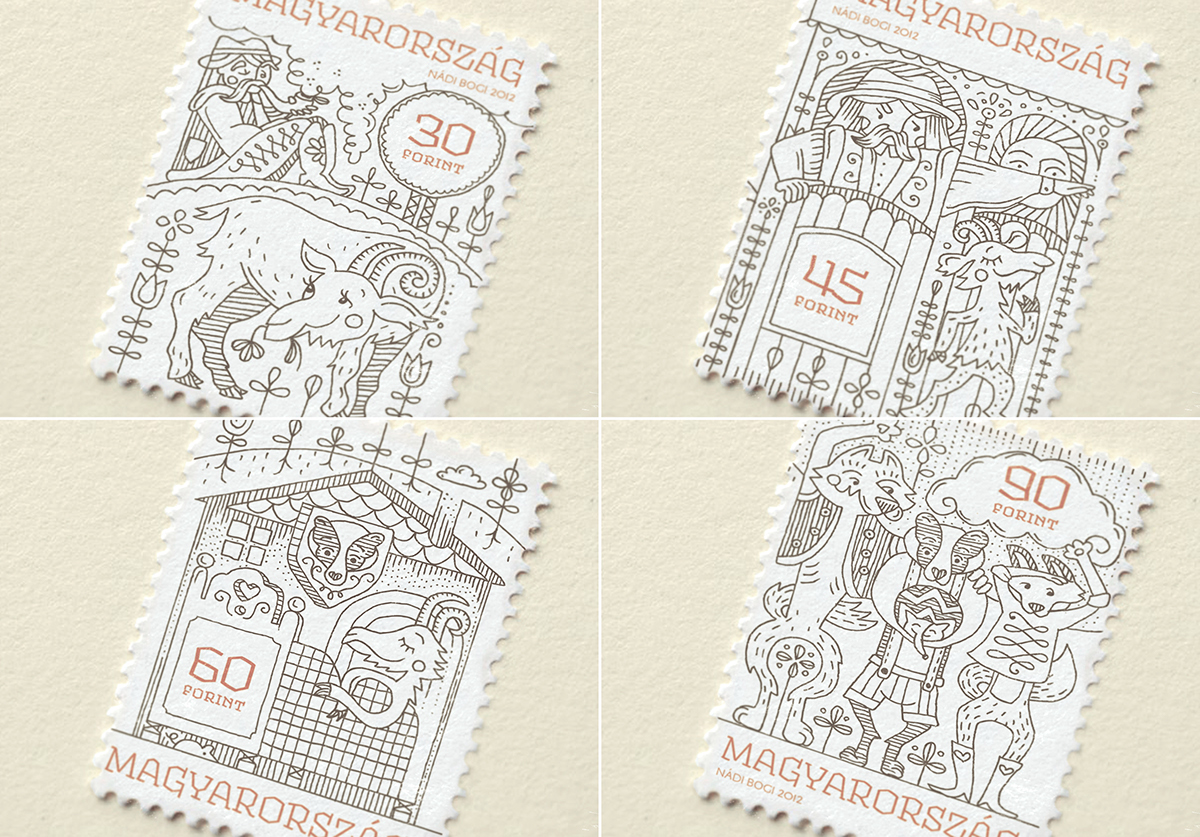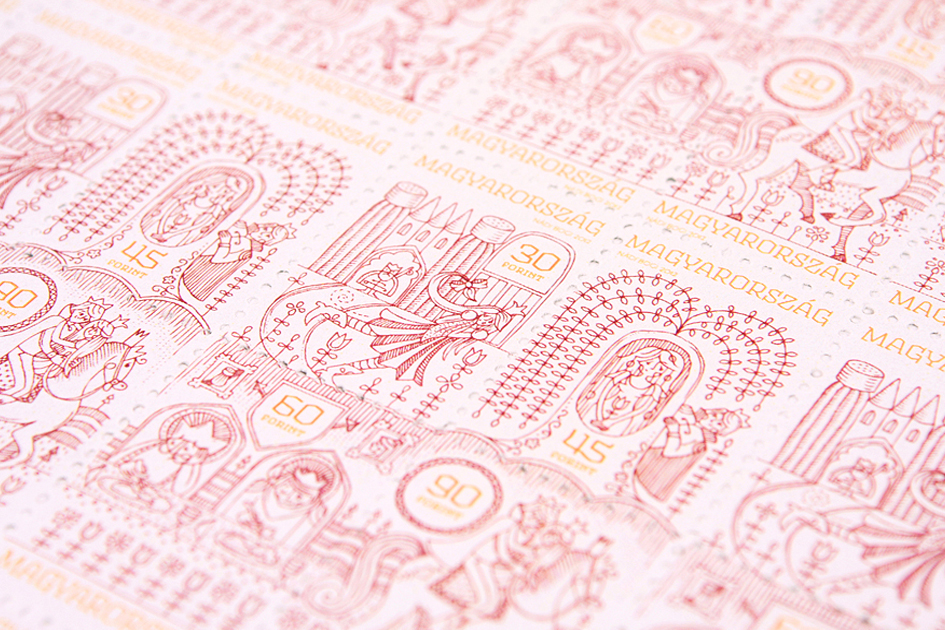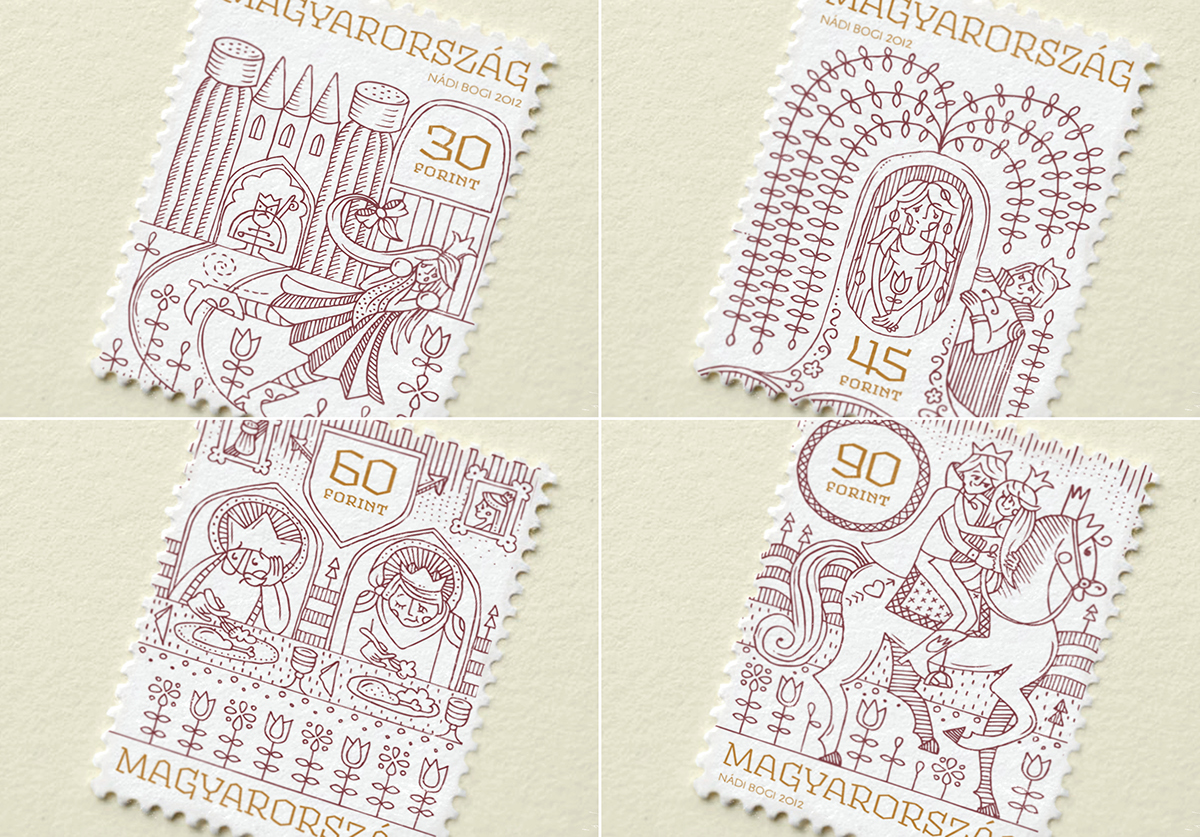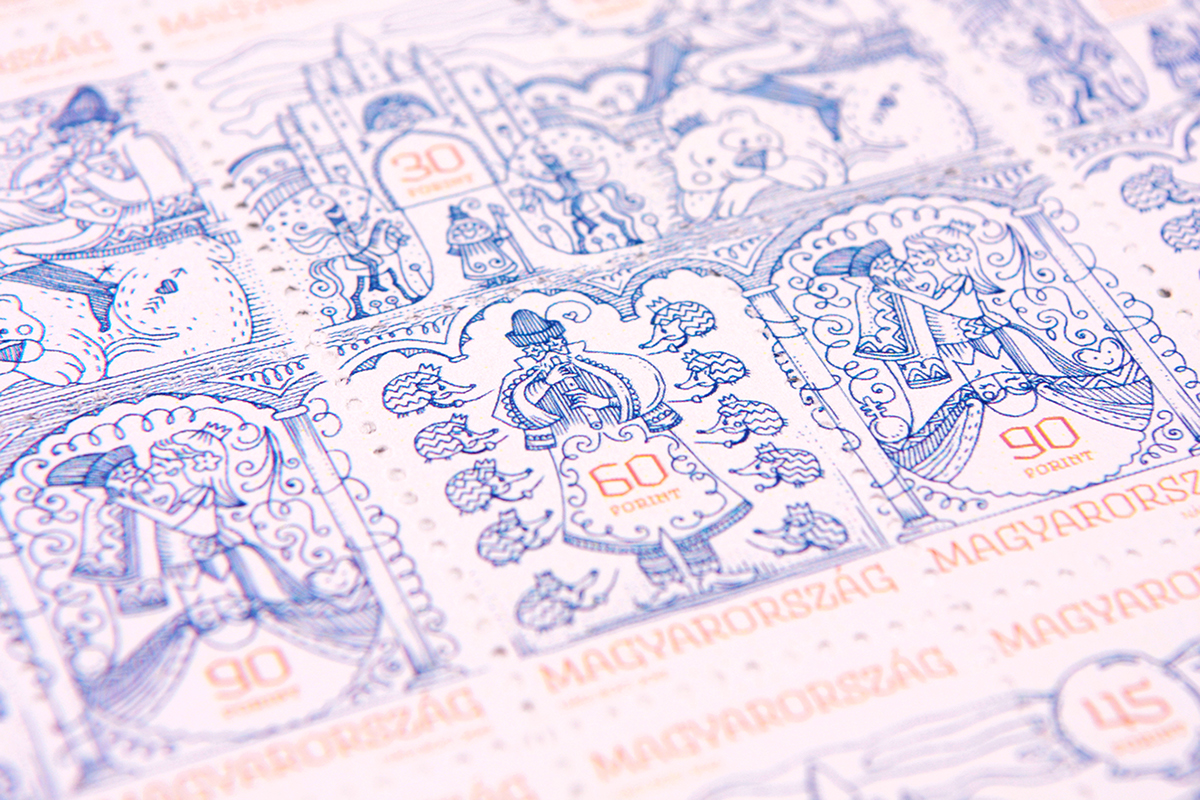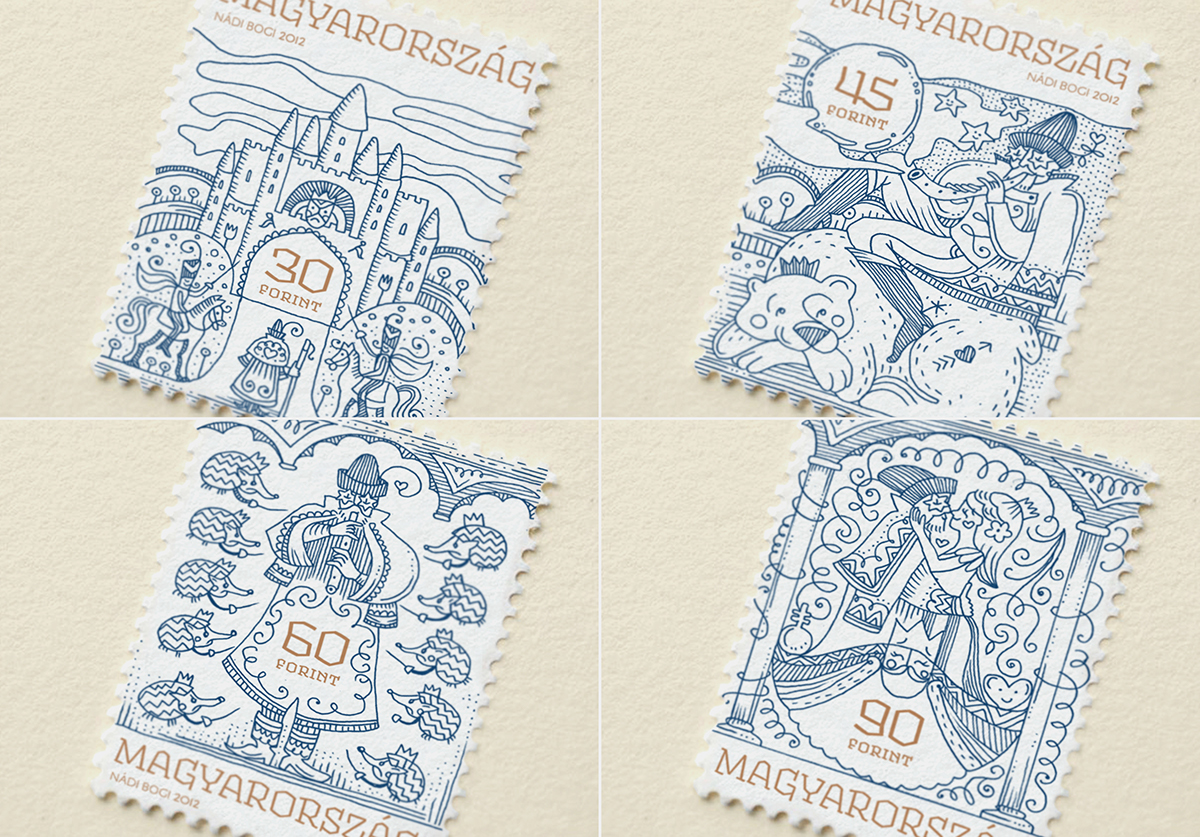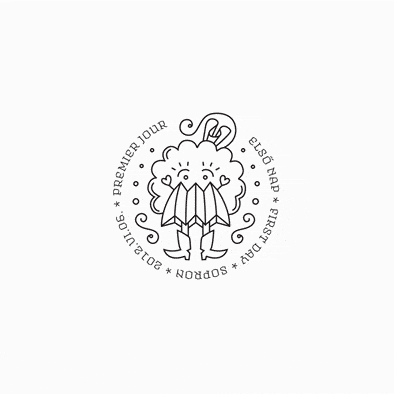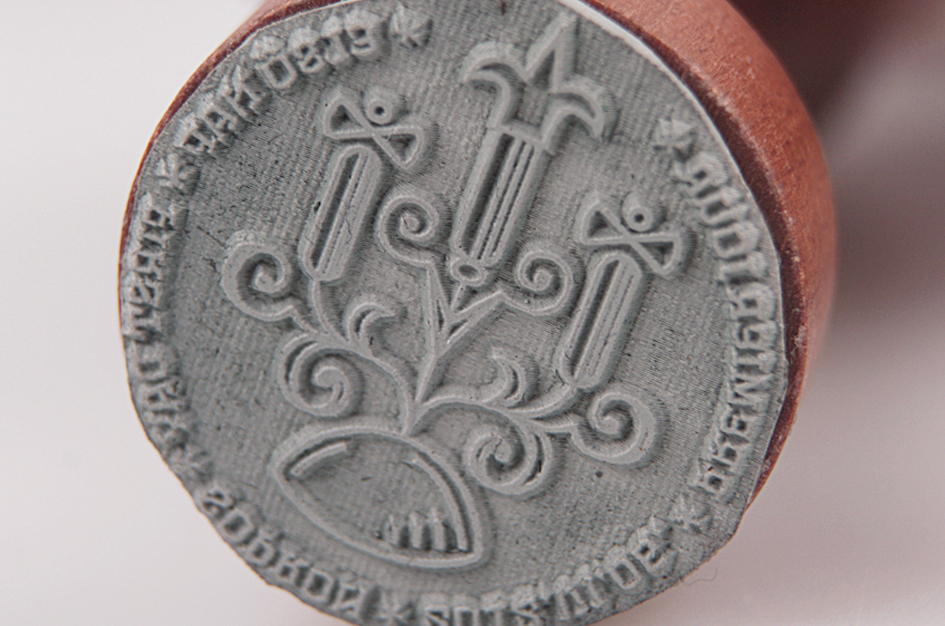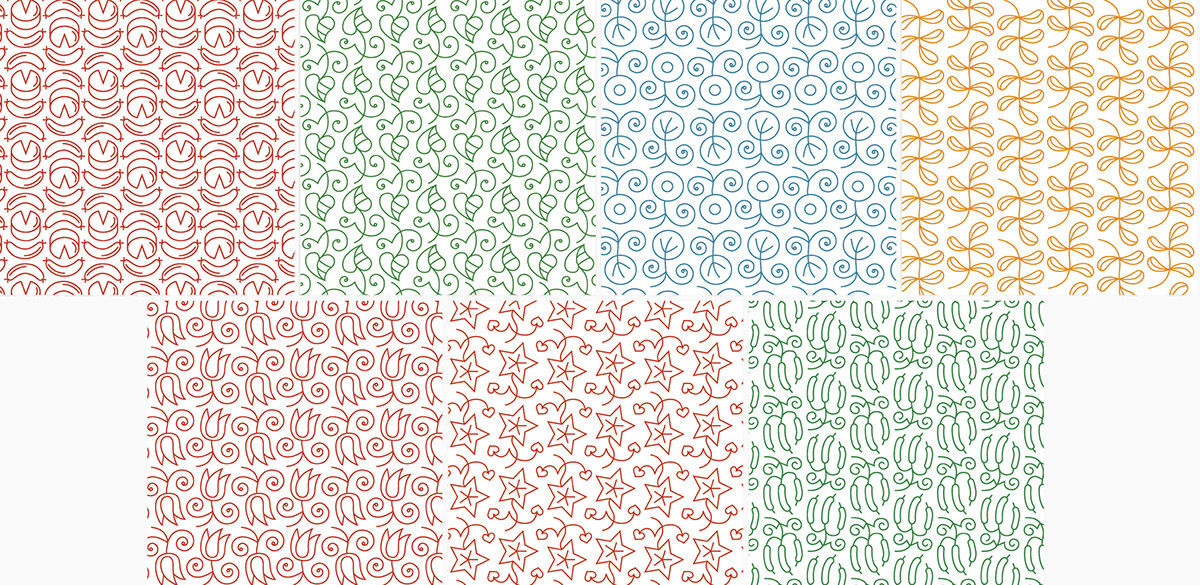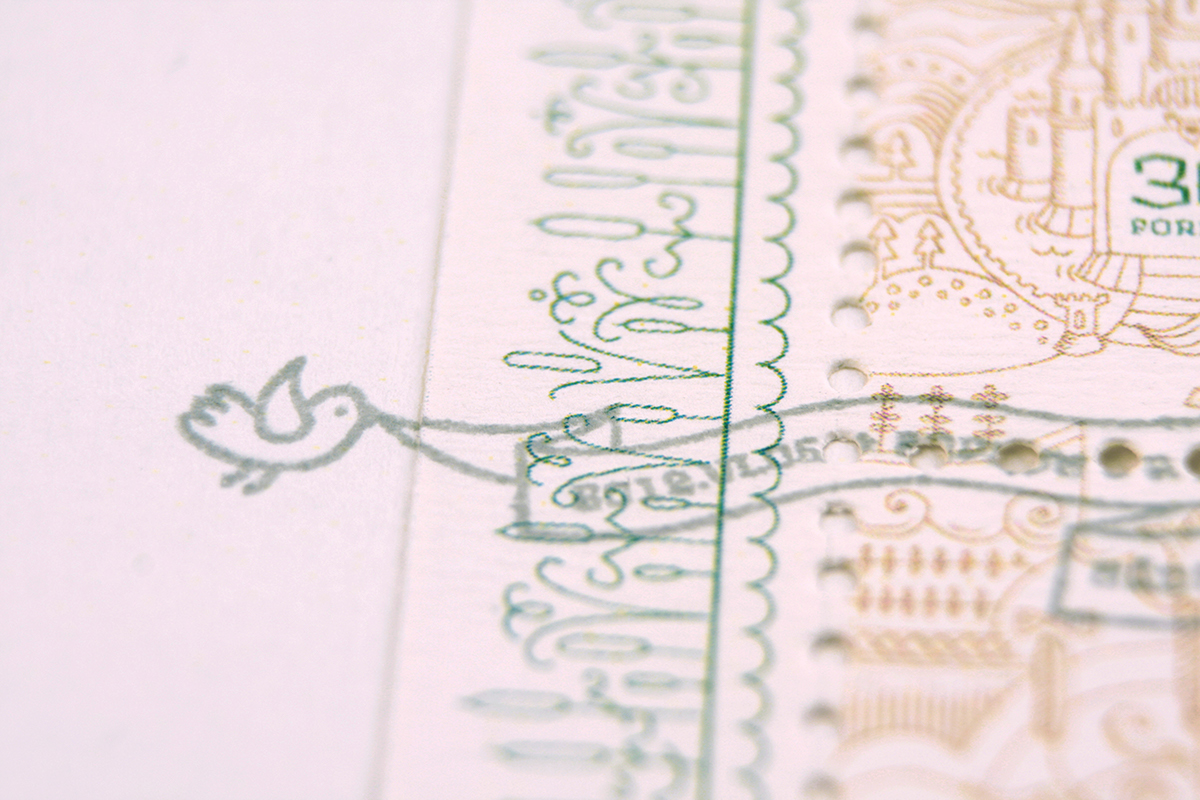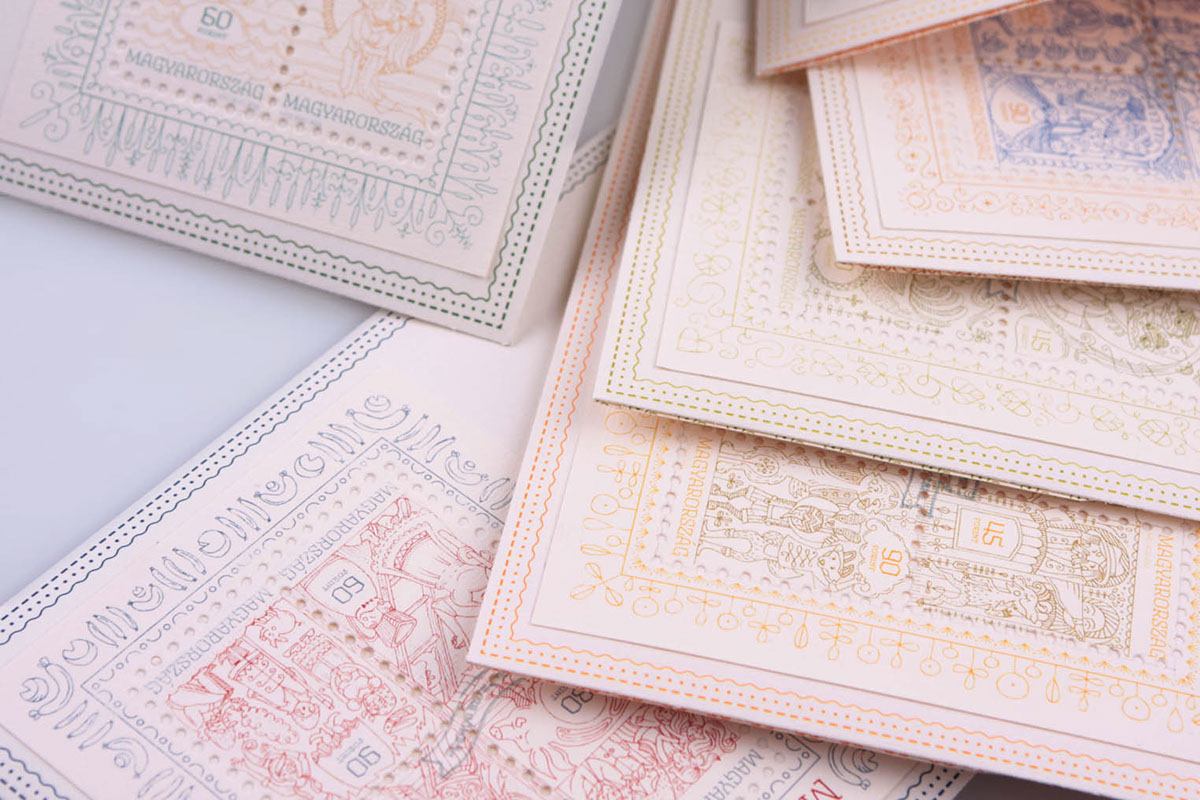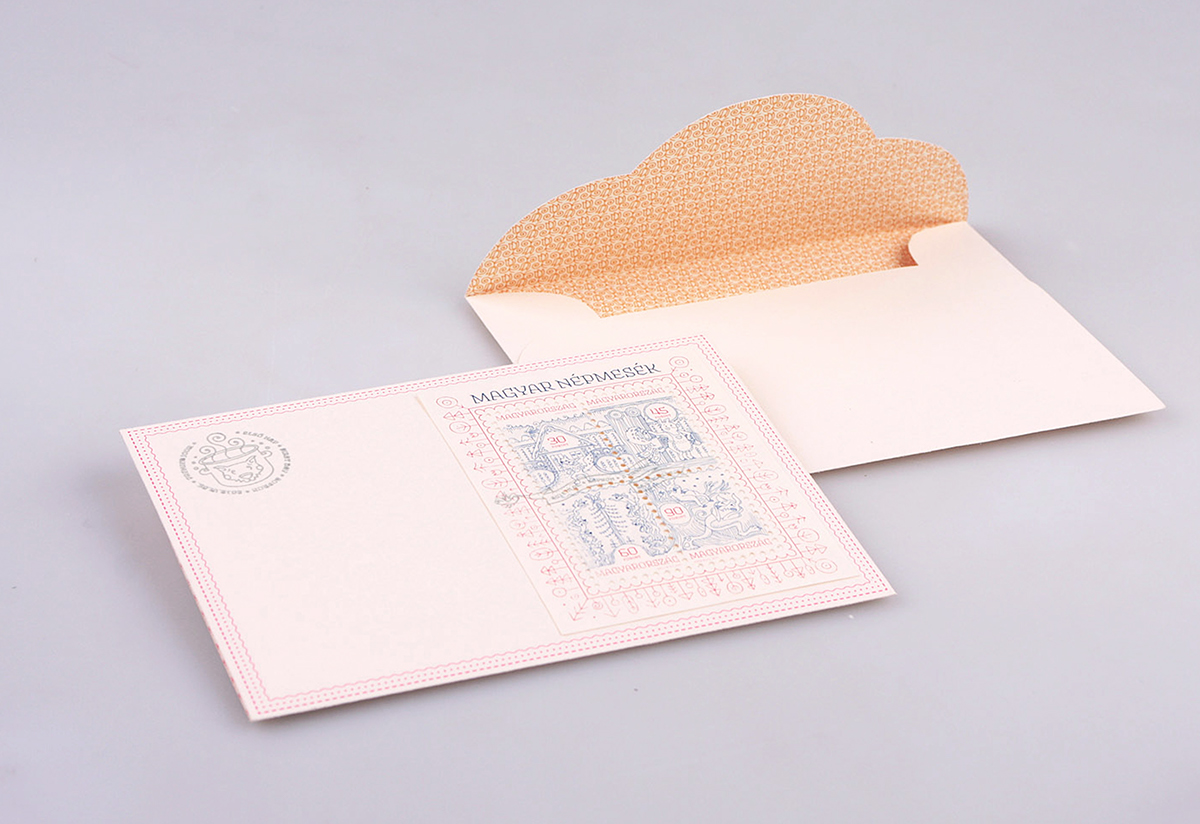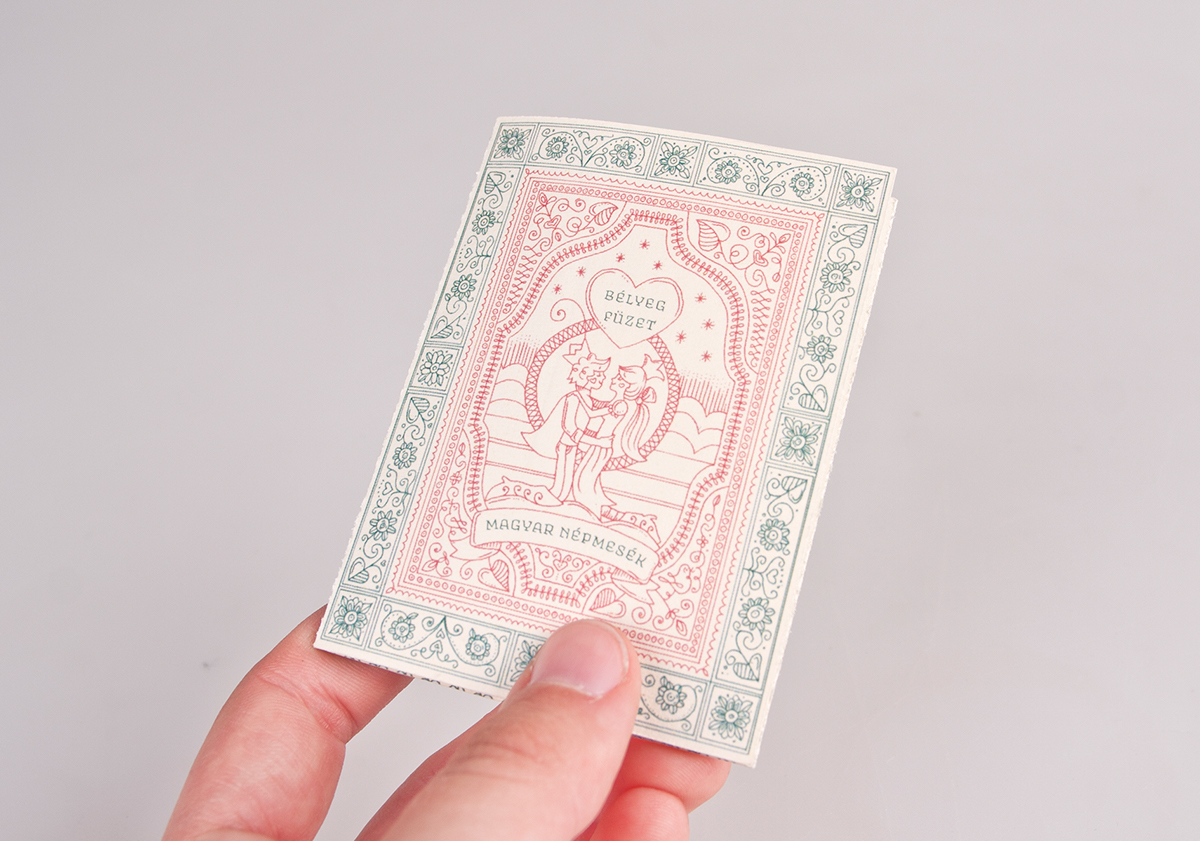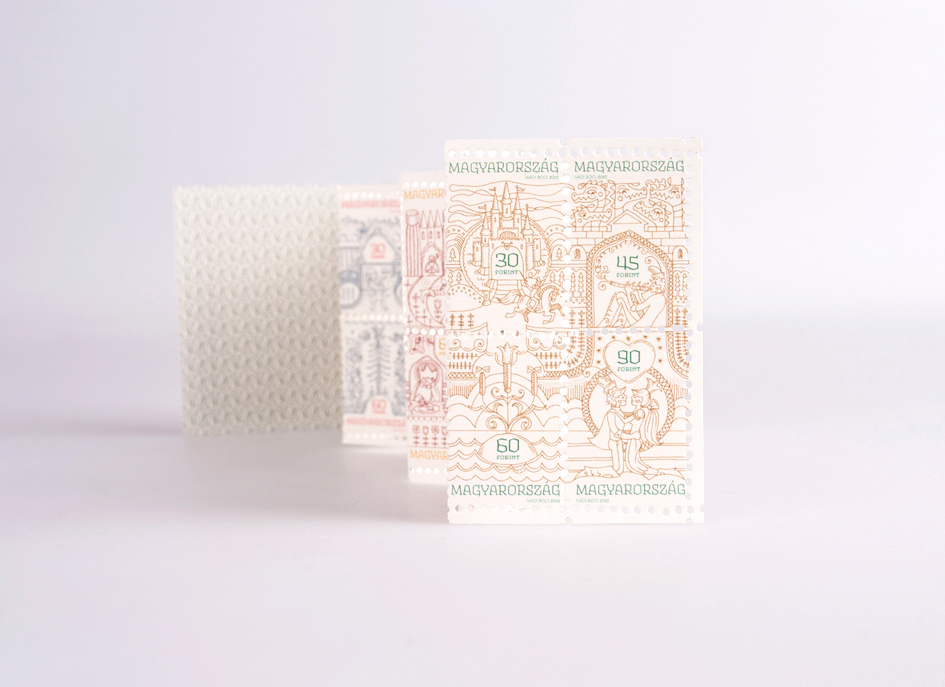S T A M P D E S I G N for hungarian folk talesD E G R E E P R O J E C T
❦
I chose the designing of a stamp line for the topic of my thesis, because I felt I could make use of my knowledge and experience acquired during my studies in a field where I haven’t spread my wings yet. I found it very exciting to delve into the specifics, traditions and the more than one-and-half-century-long-history of this genre.
In order to create something original and novel, I had to take into account all the stamps that have been issued throughout the world. The world of the tale sare close to my heart and I noticed that there were some stamps made with this kind of theme, however there was no series made with an emphasis on just the Hungarian folktales. This good news made me quite happy, because I wouldn’t have considered making a self-serving work and I hoped I could pleasure a wide range of audience. I may be an optimist, but I think there are only a few people who are not delighted by these wonderful stories.
In my opinion, there are far more possibilities in a fable just to have only one stamp made for each one. My goal was to include some extra fun in the design. There are some stamps either in the form of sheet lets or blocks that are partof a ’puzzle’, so by collecting all individual pieces, you can see the full picture (of course the sole pieces also have a meaning).
Taking the initiative from this idea, there were four stamps made for each folk tale. I picked out seven of my favorite fables that are also well-known among Hungarians (the translation for each title: The small Gömböc, The haricot reaching the heavens, The little pigs and the wolf, The half-skinned goat, The salt, The star-eyed shepherd, The beautiful slender damsel). This way I finished four stamps for each fairy tale (28 piecesaltogether) and I also made for all seven tales a block, a first day and occasional stamper, first day envelope and a book of stamps.
My main line of conduct was to combine the elaboration and beauty of classic and old stamps with modern solutions by choosing anunconventional topic. Due to this I was also experimenting with traditional printing processes and I also plan to produce embossed stamps.
Nowadays the aversion towards stamps is high; they are only put on the envelopes in the post offices in case somebody specifically asks for it. Inspite of this fact, I don’t think stamps will ever become obsolete. The best explanation behind this statement is what Mr. Hundertwasser wrote about this wonderful invention:
“The stamp is an important object. Although very small in format, it carries a message. Stamps are a measure of the culture of
a country. This tiny, rectangular piece of paper links the hearts of the sender and receiver. It is a bridge between peoples and nations. The stamp knows no borders. It reaches us even in prisons,asylums, and hospitals, and wherever we may be on earth. Stamps should be ambassadors of art and life and not simply soulless proofs of postage paid. The stamp must experience its destiny. The stamp must once again fulfil its purpose, which means it must serve on letters. A true stamp must feel the tongue
of the sender moistening its gum. A stamp must be stuck on a letter. A stamp must experience the dark depths of the post box.
A stamp must suffer franking. A stamp must sense the hand of the postman handing the letter to the addressee....The stamp is the only work of art that everyone can own, young and old, rich and poor, healthy and sick, educated and ignorant, free or robbed of freedom..." (2/14/1990, ❥ Hundertwasser)
My degreeblog: http://bigibogibelyegei.tumblr.com/
Special thanks to Márton Juhász, Aliz Borsa, Dávid Petró
“The stamp is an important object. Although very small in format, it carries a message. Stamps are a measure of the culture of
a country. This tiny, rectangular piece of paper links the hearts of the sender and receiver. It is a bridge between peoples and nations. The stamp knows no borders. It reaches us even in prisons,asylums, and hospitals, and wherever we may be on earth. Stamps should be ambassadors of art and life and not simply soulless proofs of postage paid. The stamp must experience its destiny. The stamp must once again fulfil its purpose, which means it must serve on letters. A true stamp must feel the tongue
of the sender moistening its gum. A stamp must be stuck on a letter. A stamp must experience the dark depths of the post box.
A stamp must suffer franking. A stamp must sense the hand of the postman handing the letter to the addressee....The stamp is the only work of art that everyone can own, young and old, rich and poor, healthy and sick, educated and ignorant, free or robbed of freedom..." (2/14/1990, ❥ Hundertwasser)
My degreeblog: http://bigibogibelyegei.tumblr.com/
Special thanks to Márton Juhász, Aliz Borsa, Dávid Petró
